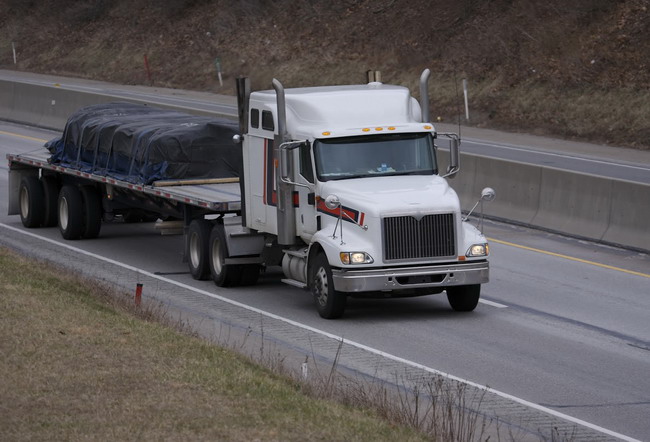Over-the-road truck drivers have three basic options for the types of jobs they accept: dry vans, reefers, and flatbeds. Drivers who choose flatbeds typically do so because the money is very good. However, hauling flatbed loads comes with its own challenges and concerns. It is very easy for drivers to not make the money they were expecting or, in a worst-case scenario, actually lose money on flatbed loads.
Flatbed driving is certainly not for everyone. Some drivers do not have the skill, while others simply lack the patience required to do the extra work involved. Therefore, what are the major concerns among flatbed drivers? Consider the following:
1. Time
Time is money in any sort of business venture. It certainly is for independent contractors who haul any kind of load. However, time is a bigger concern for flatbed drivers due to the time it takes to apply and remove tarps. Furthermore, almost every flatbed load will require a tarp for either weather protection or the protection of the cargo itself.
Truck drivers are paid by the load regardless of how long it takes them to deliver. Common sense dictates that the driver makes more money by delivering a higher number loads in the same amount of time. So when a truck if not moving, the driver is not making money. All the time spent securing a tarp in the shipping yard is time not spent on the road. It is time that costs the driver money. Shippers could help by investing in tarping machines or instructing yard personnel to assist with tarping.
2. Cargo Safety
As soon as a truck leaves the shipping yard, the safety of the cargo becomes the responsibility of the driver. Delivering cargo unscathed is one of the biggest concerns of the flatbed driver. Damaging cargo could not only cost the driver money out-of-pocket, it can also harm his or her reputation to the extent that he or she finds it difficult to get future flatbed work. That is not good for any independent contractor.
In order to protect cargo properly, drivers have to learn how to secure loads and properly apply flatbed tarps. It is something that takes quite a bit of practice and real life experience. New drivers should not be afraid to ask their more experienced counterparts for help and advice.
3. Government Regulation
Lastly, flatbed drivers are subject to a long list of regulations at both the federal and state levels. The federal government has a whole series of regulations specifically dealing with cargo securement. On top of that, each of the states has its own regulations relating to load security and the protection of other drivers on the road.
Regulatory compliance requires drivers to know and understand the regulations completely. Experienced truck drivers get a copy of federal regulations they keep with them whenever they are on the road. As for state regulations, that varies from one driver to the next. At any rate, not being apprised of the current regulatory environment could land a driver in hot water at any weigh station or roadside inspection.
Hauling flatbed loads does offer a better paycheck for drivers willing to put up with the extra requirements. Moreover, as the economy expands, the industry is seeing a steady increase in the number of flatbed drivers needed. It is a very positive situation for truckers and the industry as a whole.
If you are a driver, be sure to pay attention to cargo safety and government regulation even in the midst of time constraints. If you are shipper, cut you drivers a break and help them any way you can.
Source: Mytee Products: http://www.myteeproducts.com/blog/efficiently-working-with-flatbed-truck-tarps/





